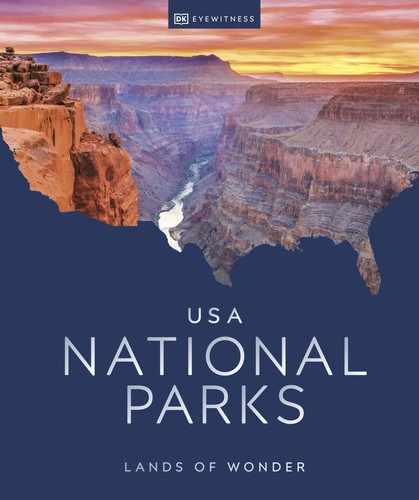UNSUNG HEROES
Individuals from different walks of life worked to preserve our natural heritage through the 19th and 20th centuries. Few received the credit they deserved, but the contributions of these unsung heroes are part of this great legacy.
African American contributions
Before emancipation, in 1863, African American guides led tours through the many features of what is now Mammoth Cave National Park, in central Kentucky. Best known among them was Stephen Bishop, who is credited with discovering and exploring many sections of the longest cave system in the world. Bishop created the first maps and named many of the cave’s most prominent landmarks. He was buried in the national park.
In 1903, more than 400 African American men of the US Cavalry were dispatched from their military base at the Presidio in San Francisco to patrol the newly established national parks of Yosemite and Sequoia. Led by Captain Charles Young, this regiment—considered part of the Buffalo Soldiers—performed many of the same duties that park rangers do today. For three summers, until 1906, they built roads, trails, and campgrounds that visitors still use and enjoy.

Captain Charles Young was the first African American national park superintendent
Trailblazers of the 20th century
George Melendez Wright was a young naturalist of Hispanic descent who, in 1933, he was appointed the first chief of the National Park Service Wildlife Division. Using his own funds, he conducted a four-year study of park sites ranging from Yosemite to the Everglades. With an eye toward restoring parks to their natural state, Wright pushed for the creation and enforcement of policies that restricted the feeding of bears and the killing of predators to encourage ecological balance.
Later in the 20th century, Selena LaMarr shared her Atsugewi tribal customs as an interpretive ranger at Lassen Volcanic National Park. For 20 years, starting in 1952, she gave demonstrations of traditional basket weaving and food preparation to show visitors the culture of a civilization that might otherwise be lost in the past. Dressed in the clothing and beadwork of her ancestors, LaMarr embodied the living memory of an ancient people.
Lancelot Jones was a popular fishing guide and private landowner on Biscayne Bay. Having inherited the property from his formerly enslaved father, Israel Lafayette Jones, the charismatic entrepreneur courted the favor of the millionaires who vacationed there. But when developers attempted to buy up the land to create an exclusive resort community, Lancelot Jones insisted that the environment stay exactly as it was. His resistance contributed to the creation of a national monument in 1968 before Biscayne was designated a national park in 1980.
“ If Martin Luther King were alive today, he would be first and foremost to say we as a people need to go to Yellowstone, we need to go to the Grand Canyon. Because if this is America’s best idea and we played a role in this creation, how dare we not choose that for ourselves. ”
Shelton Johnson, Yosemite National Park Interpretive Ranger, 2013
INSPIRING IDEAS
Celebrate the Heroes
The NPS has several monuments and celebrations to its unsung heroes.
Buffalo Soldier Speaks
In summer, watch beloved interpretive ranger Shelton Johnson tell the story of the Buffalo Soldiers at the Yosemite Theater.
Old Guides Cemetery
Pay your respects at Stephen Bishop’s grave in the cemetery at Mammoth Cave National Park.
Women’s History Month
Throughout March, women conservationists and pioneers—both past and present— are celebrated across all the national parks.

Selena LaMarr was famous for educating visitors and Lassen Volcanic National Park staff about the skilled craftsmanship of American Indians

Buffalo Soldiers of the 9th Cavalry were stationed at Yosemite National Park, under the leadership of Captain Charles Young
